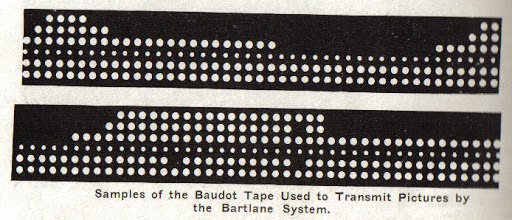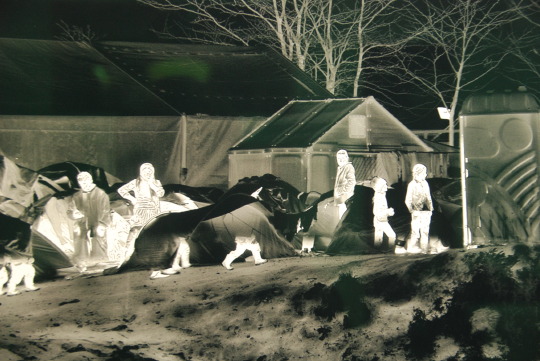on the role of video and visuality in security and world politics
Don't wanna be here? Send us removal request.
Text
CFP VISUAL IR@EISA – CALL FOR PAPERS - ST15
Visual International Relations (IR) is an internationally growing field of academic research, political critique and aesthetic practice. Past work in this field has shown how our understanding of international relations, security and world politics is enhanced by paying attention to vision, visuality and visuals.

We invite scholars interested in deepening our engagement with how different international and global political phenomena such as migration, climate change, human rights, gender, and war are visually mediated and constituted, and in reflecting on how different visual technologies from oil paint to computer vision or CGI intervene in the political. We encourage contributors to engage as well as employ different media such as photography, computer- generated images, film, graphic novels, video and painting.
Theoretical and methodological contributions that critically reflect the merits and challenges of Visual IR, and the visual assumptions of IR in general, are at the core of visual scholarship. We invite contributions that deepens this engagement by addressing vision, visuality, visibility, and visuals in IR in unexpected, theoretically informed and methodologically reflected ways. Contributions that investigate the normativity of vision and (in)visibility are particularly welcome, as are contributions to enhance our teaching practices and to think about IR in terms of creativity.
While all topics are highly welcome, we are particularly interested in papers and panels that deal with the following topics:
Digital Visuality
Artificial Intelligence and visual aesthetics
In-/Visibilities of Violence
Everyday Visual Practices
Global Politics, Art and Activism Beside panels, we are looking forward to introducing a new format, called ‘Show & Tell’. The idea is to show one image related to your current research and to tell others what you are currently working on. Each person will have about 3-5 minutes (depending on the number of participants). Please indicate in your submission whether you want to join this informal event in addition. Or send us an email if you would like to ‘show and tell’ without a traditional paper to present in our section. Submit your contribution to ST15 here March 15, 2023! If you have further questions, please contact Rune or Gabi.
2 notes
·
View notes
Text
Two-year PhD scholarship in the Post-Visual Security project
The Post-Visual Security research project is looking for excellent candidates with an interest in digital media and security politics, for a two-year PhD scholarship offered by the Gerda Henkel Foundation.

The Post-Visual Security project investigates the more-than-visual qualities of digital images, and shows through empirical studies how digital images in contemporary security practice do much more than show things. The project proceeds from the hypothesis that by looking at the roles networked digital images play in security politics and practice, it is possible to understand not only the features of digital images that make them important to security, but also how security politics and practice is reconfigured by networked digital images.
The project asks a question that is becoming increasingly unavoidable for critical security thinkers in the wake of the aesthetic turn:
Are we misunderstanding the security relevance of networked digital images if we only study what they show instead of what they are, and what they do in security practice?
The project is to fill out the concept of ‘post-visual security’ with a developing understanding of the security practices digital images enable. This concept integrates an understanding of digital images as post-visual with an understanding of security practice built on the more-than-visual qualities of digital images – for example their standardization and metatdata. The project uses this concept to provide new empirical knowledge about the role of post-visuality in security and conflict, and to develop tools and methods that use the more-than-visual qualities of digital images to open up new ways of studying security politics and practice.
To achieve these goals, the project proceeds along three research streams that organise a total of ten work packages, and the PhD student is expected to engage in research that touches on all three streams.
Research stream 1 analyses post-visual technologies at the development stage. Here we are doing fieldwork with and interviewing developers of computer vision, automated forms of recognition, and visual forensics.
Research stream 2 investigates post-visual security technologies at the stage of application for security purposes focusing on the affordances of traceability and computability. We talk to for example police departments and airport officials using face recognition, and are always interested in hearing from people using visual decision support technologies to scan large amounts of images.
Finally, the transversal research stream 3: Post-visual security theory and method takes its inputs from all project activities to deliver the theorisation of post-visual security and the methods for studying it.
Experience with and interest in digital and/or visual methods is an advantage, as is familiarity with critical security studies and particularly the thinking developed following the aesthetic and visual turns in scholarship. This should be demonstrated in the research plan submitted along with the application.

The funding is for two years of full-time studies, starting in February 2021. Subsequent to satisfactory progress within the two years, the project will assist in seeking further funding for the completion of the PhD within the estimated total 4-year timetable. Finland has a generous array of foundations that support PhD studies, but we cannot guarantee success in acquiring further funding.
A grant of 1600 €/month will be paid directly from the Gerda Henkel Foundation. The research is to be undertaken at Tampere Universities, and the PhD student will have office and facilities available at the university, but may also work from elsewhere when working for the Post-visual security project.
Applicants should use the Tampere Universities application portal and conform to the eligibility criteria listed there. In the online application form, in the field “Responsible supervisor and possible other supervisor(s) or members of the follow-up group” the candidate should indicate a wish to join the Post-Visual Security project and be supervised by Rune Saugmann. The application deadline is October 30th, and is not negotiable.
If you have any further inquiries or questions regarding the project please get in touch with rune.saugmann.andersen[at]tuni.fi, for questions about administrative issues and procedures please contact mab.doc.tau[at]tuni.fi
2 notes
·
View notes
Photo

Richard Mosse’s fantastic and haunting Heat Maps taken in the infrastructure of camps that has been built around Europe to keep migrants at bay, shows the changing reality and temporality of images. They are made with thermal cameras similar to the ones employed by border agencies.
To me these images can teach us how the new visual infrastructures of sensing visualise migration, and how they change the temporality of migration management. Whereas traditional surveillance and photojournalistic images are directed at evidencing a past, the ghostly and digitally stitched half bodies shown above in a detail from Heat Maps cannot evidence much of anything. This means that the role of this photography in governance is not evidencing, it is something else. I think it shows how post-photographic sensing is directed at forecasting, and mapping futures and movement of bodies. I have written about the double temporality of hindsight and foresight of visual surveillance in Bleiker’s Visual Global Politics, in 2018, but it is only now that I come across an adequate illustration of the new visuality of anticipatory surveillance.
Image taken by Frank Möller at (and reproduced with permission of) the Jack Shainman Gallery, NYC.
2 notes
·
View notes
Text
Miltary techno-vision as technologies of indecision and ambiguity
Here’s a short blog post on the EJIS site about my recent article in the excellent special issue about compositions in IR.
It continues to fascinate me how the opacity of technology allows it to claim much more than it is actually capable of doing. This is an issue that has been flagged by many in many different areas, but in the military domain it becomes even more acute, and also even harder to get to get an honest look at the capabilities and problems of technologies.
The idea of a fog of war, while probably describing a reality that was to be overcome at the point it gained traction, is today most ofte referring to a semiotic fog that is deployed by military actors to cloud and obscure battlefields, including the malperformance of technologies in them. I talk a bit in the article about how that is visible in the collateral murder video leaked a almost a decade ago by wikileaks.

0 notes
Link
We need to understand the limits of autonomy in weapons systems. My piece in Danish foreign policy mag Ræson
0 notes
Link
Data is your currency, but you’re not getting much for it
0 notes
Link
Nice debate hosted by SWP and ANCB where I was invited to comment on presentations
0 notes
Video
youtube
My research video-remix of the video-battle for Brorson, where I investigate how bodies and violence is made meaningful in relation to war and immigration politics. This is chapter 9 of my Ph.D. dissertation, see the whole dissertation at http://saugmann.tumblr.com/dissertation
0 notes
Link
The dissertation page is online This page contains the video chapters of Remediating Security: A semiotic framework for analyzing how video speaks security.
0 notes
Link
Met says passing on clip of Isis militant murdering US journalist on social media could lead to prosecution under anti-terror laws
0 notes